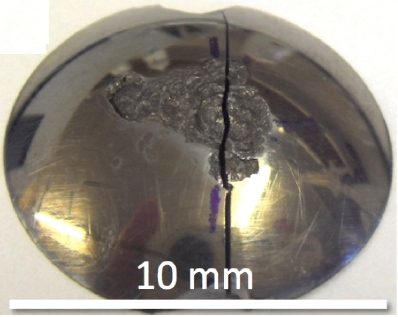

The microstructure of aircraft gas-turbine engine bearing steel has been characterised after service in Rolls-Royce Trent engines, with the focus on the surface condition and the consequences of sliding and rolling contact. The carbide populations at the surfaces of rolling elements are found to be depleted by 30% after 30,000 h engine service. A single ball failure occurred after this period of operation, leading to fatigue spalling that initiated below the contact surface. A comparison between unused bearing raceways and those that have experienced service revealed that the microstructures resulting from secondary hardening remain remarkably stable during operation. Plastic flow along the direction of rolling is confined to a shallow zone 2 μm beneath the contact surfaces. Transmission electron microscopy has revealed a new mechanism of plastic deformation in these bearing steels, in the form of mechanical twinning initiating at interfaces such as prior austenite grain boundaries. It is also demonstrated that work hardening occurs to a depth of some 1 mm in the raceway that has experienced 30,000 h of service.
Materials Science and Technology 30 (2014) 1911-1918.

| PT Group Home | Materials Algorithms |